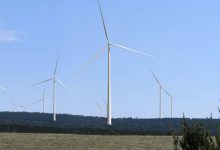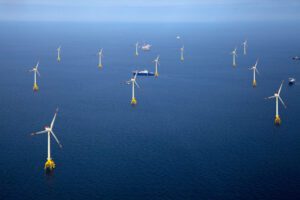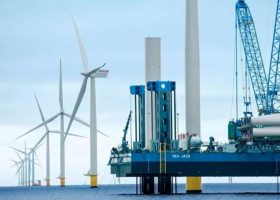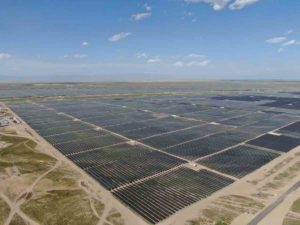A Supreme Court challenge to the development of a wind farm proposed for Victoria’s Strzelecki Ranges has kicked off this week, with the project’s developer taking the unusual step of sharing a link to the live stream of proceedings via LinkedIn.
The state government approved 200MW Delburn Wind Farm, a project from renewable energy company Osmi Australia, is a 33 turbine project that promises to power 135,000 homes in Victoria’s Latrobe Valley region.
The project, approved last March by the Victorian planning minister, would be located on timber plantation land centred in the Delburn area, overlooking the now defunct coal-fired Hazelwood Power Station.
The Strzelecki Community Alliance (SCA) last year announced its intention to challenge the wind farm’s planning permits, on the basis that the development is “inappropriate” and poses a threat to “lifestyles, health, rights and financial security.”
Among other concerns, SCA alleges that up to 42 hectares of remnant native vegetation will be threatened during the construction phase. The group has also expressed concerns that the turbines will impede firefighting efforts and cause visual and noise disturbances for neighbours.
The court case is part of an uptick in legal proceedings against wind energy developments in Victoria, in particular, as projects and the turbines that populate them become bigger.
Osmi has been refreshingly transparent about the legal challenge and on Wednesday Pat Simons, Yes2Renewables Coordinator at Friends of the Earth Australia, praised the developer for showing “good leadership” in sharing the link to the live court case.
“It’s important the industry allows space for disagreement,” Simons wrote on LinkedIn, adding that “hopefully the case puts a number of the misleading claims made against the project to rest.”
The Delburn Wind Farm is a major project, its turbines proposed to reach a maximum height of 250 metres from the ground to the blade tip (though the actual turbine size will be determined at a later date). If the turbines hit their upper height limit, they would be among some of the taller wind towers operating in Australia.
Wind turbines have been steadily gaining in height over the decades – whereas in the 1990s, wind turbines typically had hub heights (the distance from the ground to the centre of the hub) of 30 metres, today’s turbine hub heights average out at 100 metres.
While they stoke concerns around visual disturbance, the soaring heights of turbines provide a greater energy generation capacity, because the wider diameter of the rotor disc translates into more torque to drive the electrical generators in the turbine’s hub.
OSMI produced a Background Noise Monitoring Report and Environmental Noise Assessment via Marshall Day Acoustics. Those assessments were also subject to peer review by Sonus and Environmental Audit by an EPA-appointed Environmental Auditor, in accordance with the requirements Clause 52.32-4 of the Planning Scheme.
Those assessments found that the predicted noise levels from the wind farm were below the base noise limit of 40 dB (decibel) LA90 at all receivers by at least 2.9-4.3 dB.










